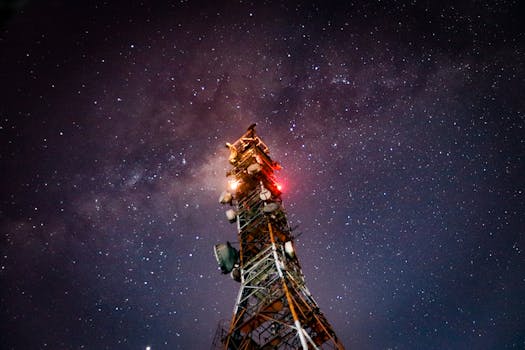
MEO Satellites: Revolutionizing Global Communication with Medium Earth Orbit Technology
MEO satellites, or Medium Earth Orbit satellites, are a type of satellite that operates in an orbit between 2,000 and 36,000 kilometers above the Earth’s surface. This orbit is higher than Low Earth Orbit (LEO) satellites but lower than Geostationary Orbit (GEO) satellites. MEO satellites are designed to provide a range of services, including navigation, communication, and Earth observation.
The use of MEO satellites is becoming increasingly popular due to their ability to provide faster and more reliable connections compared to traditional GEO satellites. MEO satellites have a lower latency than GEO satellites, which means that they can transmit data more quickly. This makes them ideal for applications that require real-time communication, such as video conferencing and online gaming.
How MEO Satellites Work
MEO satellites work by transmitting and receiving data to and from Earth-based stations. They use a range of frequencies, including Ka-band, Ku-band, and C-band, to transmit data. The satellites are equipped with transponders, which are used to amplify and re-transmit the signals. The signals are then received by Earth-based stations, which decode and process the data.
MEO satellites are typically launched into orbit using a launch vehicle, such as a rocket. Once in orbit, they use their onboard propulsion systems to maintain their position and altitude. The satellites are designed to operate for many years, with some having a lifespan of up to 15 years or more.
Applications of MEO Satellites
MEO satellites have a range of applications, including navigation, communication, and Earth observation. They are used in a variety of fields, including aviation, maritime, and land transportation. MEO satellites are also used in the provision of broadband internet services, particularly in remote and underserved areas.
One of the most well-known applications of MEO satellites is the Global Positioning System (GPS). GPS is a network of MEO satellites that provide location information to GPS receivers on the ground. The system is used for a range of applications, including navigation, tracking, and mapping.
Benefits of MEO Satellites
MEO satellites offer a range of benefits, including faster and more reliable connections, lower latency, and increased capacity. They are also more resistant to interference and jamming compared to traditional GEO satellites. MEO satellites are ideal for applications that require real-time communication, such as video conferencing and online gaming.
In addition to their technical benefits, MEO satellites also offer a range of economic and social benefits. They can provide broadband internet services to remote and underserved areas, helping to bridge the digital divide. MEO satellites can also be used to provide emergency communication services, such as search and rescue operations and disaster relief.
Challenges and Future Developments
Despite the many benefits of MEO satellites, there are also a number of challenges and future developments that need to be considered. One of the main challenges is the increasing congestion of the MEO orbit, which can lead to interference and collisions between satellites. There is also a need for more advanced technologies, such as more efficient propulsion systems and more powerful transponders.
In terms of future developments, there are a number of new and innovative applications of MEO satellites that are being explored. These include the use of MEO satellites for the provision of 5G services, as well as the development of new navigation systems, such as the European Union’s Galileo system.
In conclusion, MEO satellites are a type of satellite that operates in an orbit between 2,000 and 36,000 kilometers above the Earth’s surface. They are designed to provide a range of services, including navigation, communication, and Earth observation. MEO satellites offer a range of benefits, including faster and more reliable connections, lower latency, and increased capacity. They are ideal for applications that require real-time communication, such as video conferencing and online gaming.
As the demand for satellite-based services continues to grow, the use of MEO satellites is likely to become increasingly popular. With their ability to provide faster and more reliable connections, MEO satellites are set to play a major role in the future of global communication.




